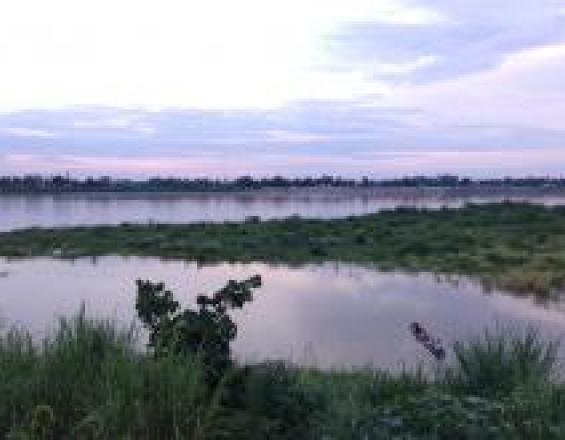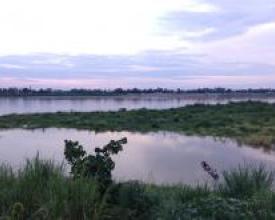Establishment and evaluation of Freshwater Protected Areas
Full Solution

Freshwater Protected Area
Harmony Patricio
We evaluated the effectiveness of existing Freshwater Protected Areas (FPAs) in the Mekong River Basin of Lao PDR by training locals to help us collect data. We also established new FPAs to protect threatened carp (Probarbus jullieni and P. labeamajor). We facilitated many workshops and consultations with communities, so that stakeholders could help design new FPAs.
Last update: 02 Oct 2020
5015 Views
Context
Challenges addressed
declining fish populations
Communities living near the Mekong river depend on fishing for food and income, but many fish are declining. Because of the river’s central role in livelihoods, many villagers support conservation. Lao law gives communities authority to establish Freshwater Protected Areas. Unfortunately, many communities do not have the technical or political knowledge to assess existing FPAs.
Location
Lào
Southeast Asia
Process
Summary of the process
Each building block could be useful on its own, but applying them in an integrated manner was essential. Stakeholder dialogue is essential when working with local communities, especially when the conservation target is a resource that is critical for their nutrition and livelihoods. The stakeholder dialogue is what clarified the appropriate methods for establishing new FPAs. Collection of data and information required capacity development and dialogue. The problem is that there aren’t enough fish.As such, the solution has to involve stakeholders as they are the primary beneficiaries of the resource and also cause direct impact on rare species. If we simply told them to stop harvesting these species, without first engaging stakeholders in dialogue, the solution achieved would not have been possible. .By enabling them to share their perspectives on the type of FPA and notake rules that would work for them, we have a greater assurance that they will comply with the regulations that they were involved with developing.
Building Blocks
Stakeholder workshops throughout planning process
We held stakeholder workshops with local communities during all of the planning stages of this project to discuss the establishment of FPAs, assess what type of structure and regulations would be most effective for them, and improve the potential for success. This engagement involved many rounds of meetings with various groups within communities, including fisher’s unions, women’s unions, and village heads.
Enabling factors
Developing relationships in early stages- Obtaining representative opinions from the community- Working within cultural context
Lesson learned
Please contact solution provider
KAP surveys with community
Our staff conducted a Knowledge Attitudes and Practices (KAP) survey of local communities to asses local perspectives on fish ecology, natural resource management, food sources, and current understanding of the law related to these topics. The survey was designed to be executed at three times throughout the project to a diverse demographic, representing a mix of ages and genders, as well as to those people that relied on different primary livelihood sources. By looking at changes in responses, we hope to measure the success of the project. During initial surveys, local people demonstrated a strong knowledge of endangered Probarbus fish behavior, and also reported declines in this and a number of other fish species
Enabling factors
Obtaining a representative sample of opinions from the village- Respondents feeling comfortable to speak honestly and not be influenced by other members of their community or what they think the surveyor wants to hear
Lesson learned
Despite our efforts to conduct surveys with individuals out of earshot of the rest of the community, the weatherthwarted our plans. Heavy rain caused many people waiting to be surveyed to crowd into the buildings where the surveys were being conducted.- It is necessary to plan for variable field conditions in a way that will ensure stakeholders have privacy while being surveyed- It is important to develop strategies that ensure all voices are heard. One key aspect of such a strategy is an understanding of which members of the community might be reluctant to speak and why.
Training locals on assessing PA management effectiveness
We trained local people to help us collect data to evaluate the effectiveness of existing FPAs to engage them in conservation and comanagement, to build their technical capacity, and to collect data with a relatively small budget. Our efforts involved trainings with government and WWF staff, and several community workshops and training sessions for local participants in partner villages.
Enabling factors
Desire of local people to participate- Diverse teaching tools, including diagrams and handson practice- Sustained oversight to ensure they have learned methods properly and maintain protocols over time or under unexpected conditions
Lesson learned
Unexpected conditions can cause confusion on how to proceed if methods are designed for specific conditions- Working with women provided us with technicians who were very detailoriented and engaged- Trainings must often be repeated several times- Constant contact and support is needed for troubleshooting
Impacts
Our work has impacted local people by building their technical capacity to collect data. By working with us to evaluate the FPAs, the local people gained a tangible sense of how their FPA works for both fish conservation and sustainable harvest/livelihoods. The communities that established new FPAs developed a strong sense of pride in their collective achievement. By protecting spawning habitat and reducing harvest, our project helps to maintain populations of endangered and other ecologically and economically valuable species. Freshwater species face a higher extinction rate than terrestrial or marine species. By protecting biodiversity in FPAs we have a positive impact on the planet's most threatened ecosystems
Beneficiaries
fishers and community members nearby.
Story
Breaking from traditional roles, Lao women joined a research effort in central Lao PDR. The women were trained to collect fisheries data to evaluate the effectiveness of FPAs aimed at fish conservation. During previous work throughout several villages we had noticed that women were very diligent about keeping records of the fish caught by men and managing sales at markets. It was empowering for them to be given a formal role in fish research and management, and to be recognized for their skills. The sense of pride in gaining new technical skills and in managing data collection for a research project was palpable. Some women said they felt they now had a better position and more respect within the community. They also felt they gained more knowledge about the ecology of fish and felt more confident to speak up in community management meetings. In the communities we consulted to establish new FPAs we originally proposed only seasonal closures, to protect spawning adults of two threatened species during their breeding period. We were surprised and delighted when the communities said they wanted the areas to be closed all year long! They thought this was a more effective and easy way to manage the FPAs, saying it would increase compliance and reduce the need for enforcement. At the village headman’s home, community members gathered to talk about developments in the establishment of FPAs and participate in a survey of local knowledge, attitudes, and practices associated with fish and natural resource management. At the conclusion of the survey and meeting, and with unanimous support of the community, the village headman signed the regulations to formalize the new FPAs. A celebratory dinner of duck, rice, and several varieties of locally harvested wild plants was served, washed down with locally brewed Lao Hai, a local variety of rice wine fermented in large ceramic vases.
